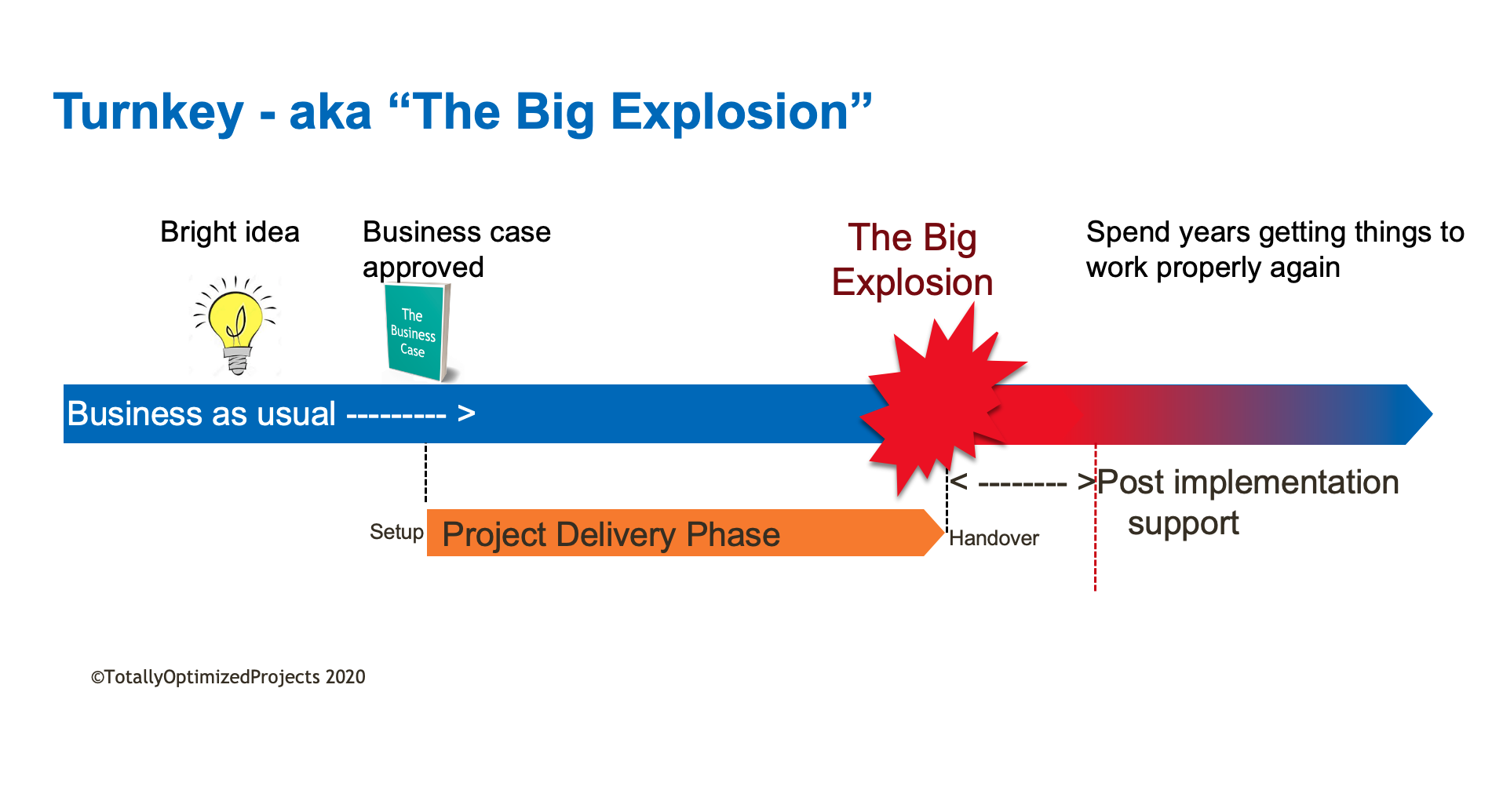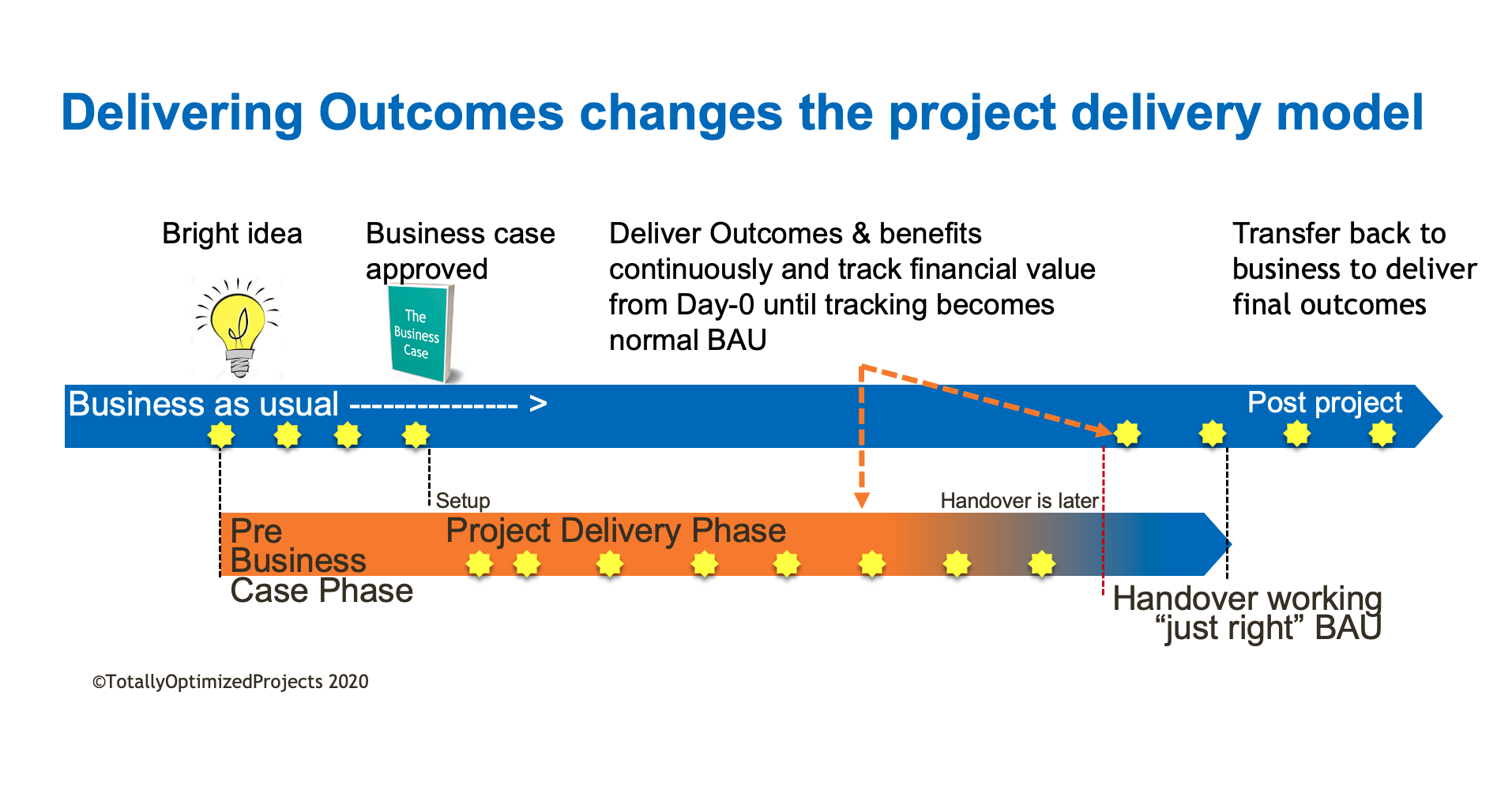What is Turnkey? The name comes because it describes a project where “the customer, upon receiving the product, just needs to turn the ignition key to make it operational, or that the key just needs to be turned over to the customer”.
For Turnkey, the end-of-the-project is something ready to turn on but not yet operating. Then the business takes over to create an operational business-as-usual environment out of it. For relatively simple projects and for most construction projects, the level of effort between “ready to turn-on” and “fully operational to an agreed level of performance” can be quite minor. The road is built; you cut the ribbon and drive down it. The building gets built; you get the keys and move in.
This is also known as “the big explosion” project delivery model.
 Turning over an ERP system as a turnkey project is not at all like handing over a building or a bridge. There is a massive difference in workload required to move from an installed software package to an operational asset, which is what the business actually wants.
Turning over an ERP system as a turnkey project is not at all like handing over a building or a bridge. There is a massive difference in workload required to move from an installed software package to an operational asset, which is what the business actually wants.
The end of the project would come, there would be a handover or post-implementation period, then the project team would disband. The business areas would be left to try and get their environment working again. Sometimes that could take months or even years.
The outcomes project model delivers the business-as-usual operational environment when it is working just right [1], and answer the question “what do we intend to achieve?”
Project Outcomes – are the subset of the overall Desired Business Outcomes, operating to the level of performance that have been agreed by the business and the project team for it to deliver.
[1] Note depending on the circumstance, “working well” or “working well enough” might also be acceptable.

